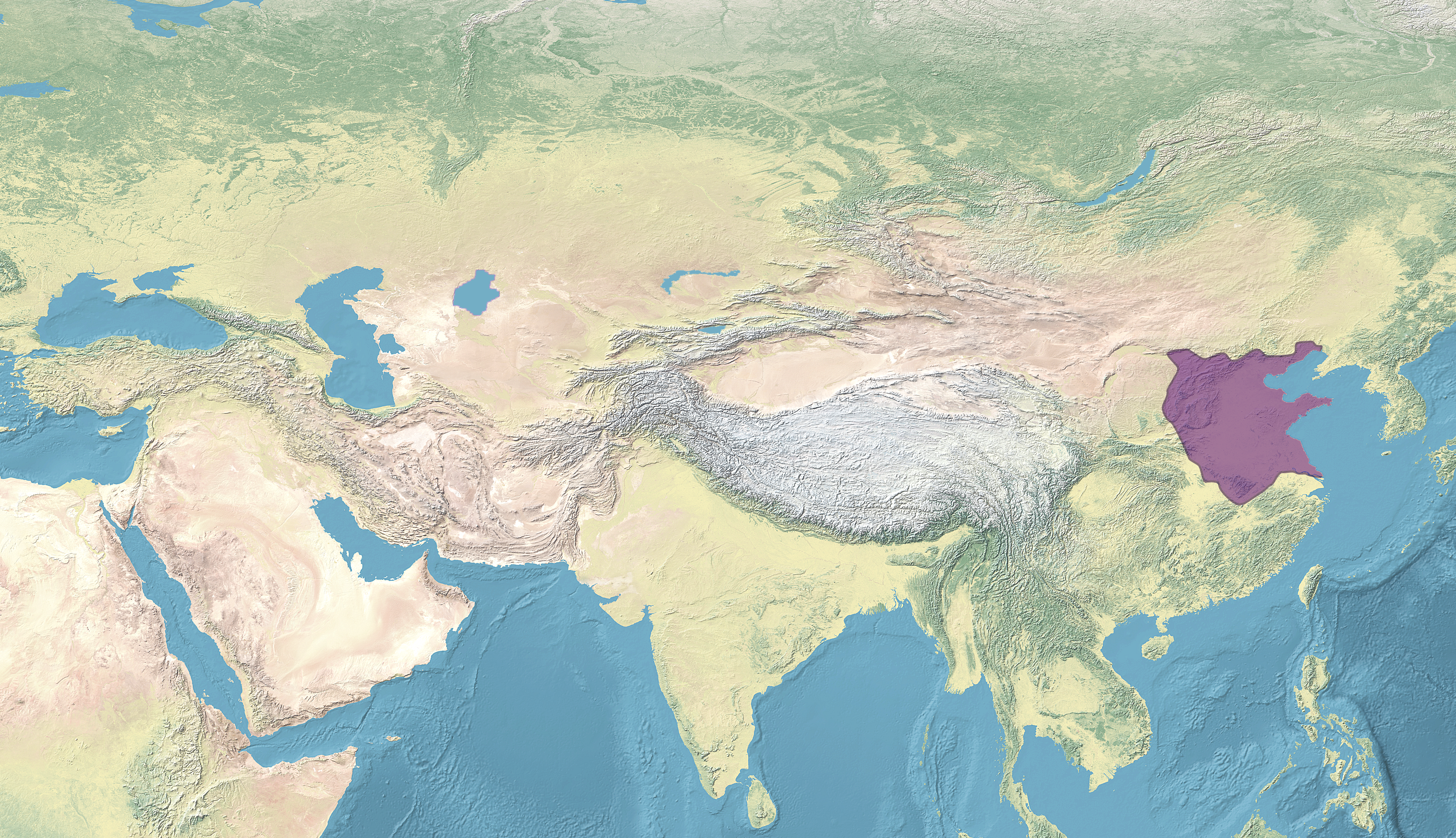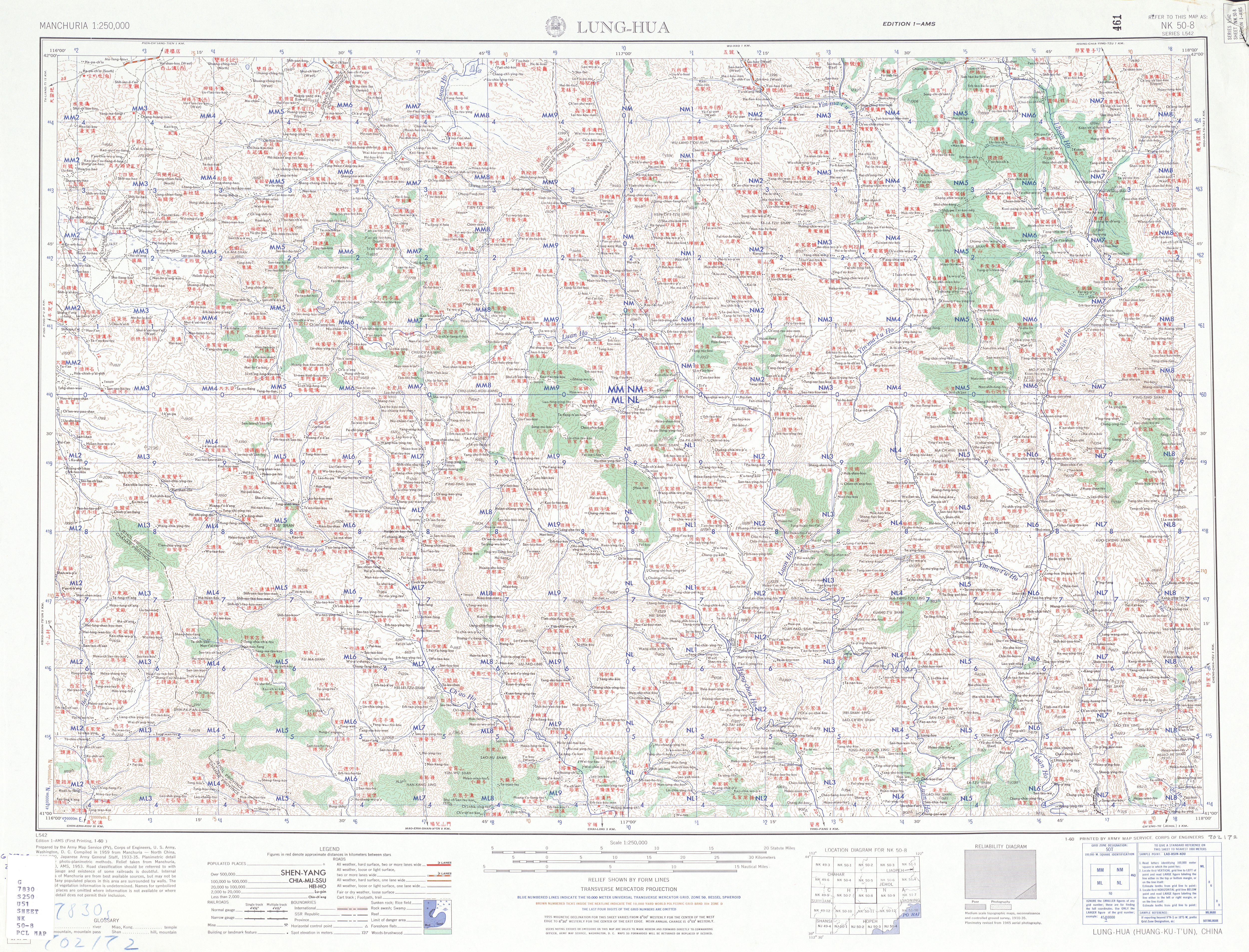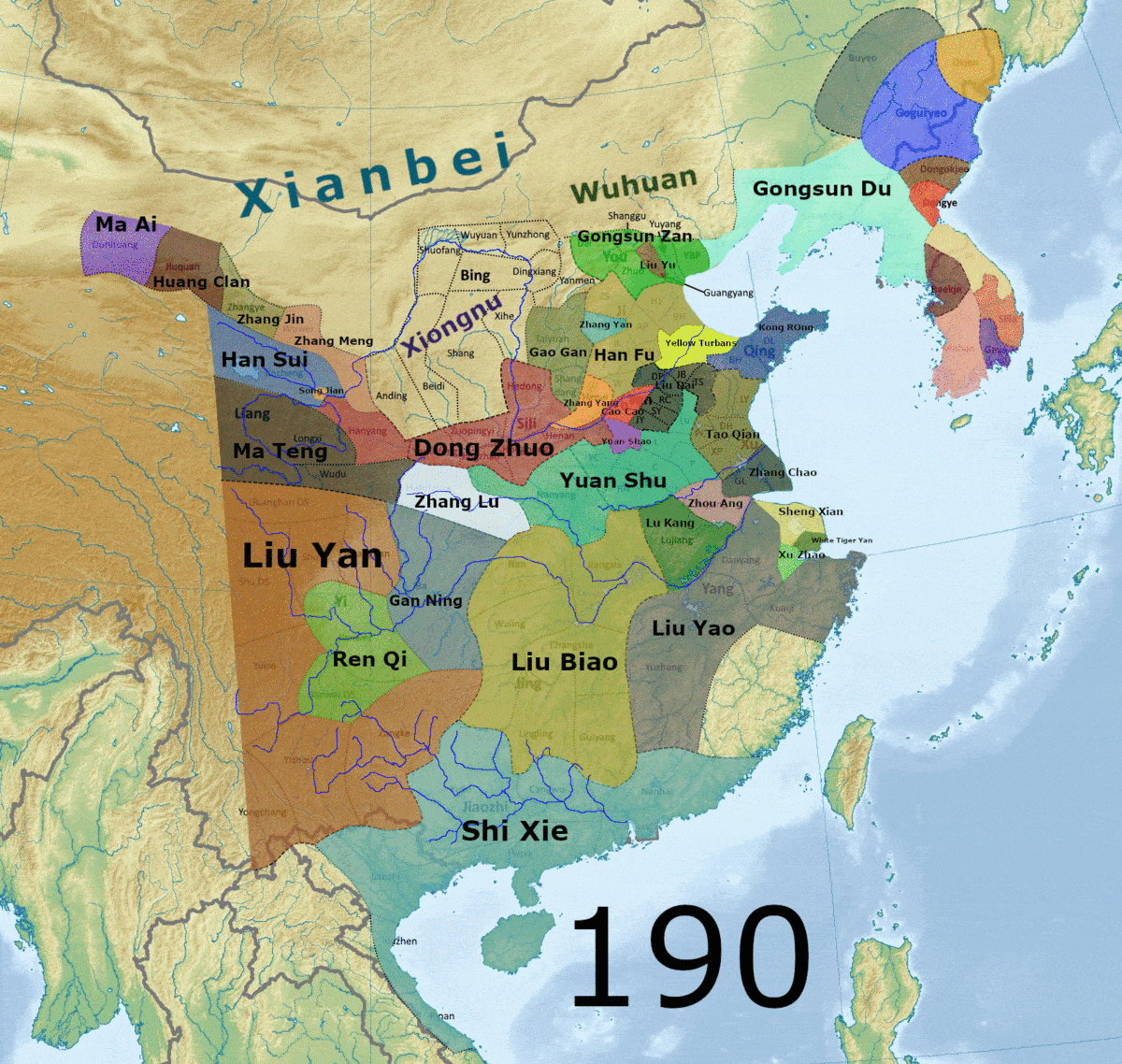|
Guangyang Commandery
Guangyang Commandery ( zh, 廣陽郡), at times also Guangyang Principality ( zh, 廣陽國), was a territory of early imperial China located in modern Hebei and Beijing. Western Han dynasty Guangyang Commandery was first established during Qin Shi Huang's reign. In early Han dynasty, its land became the fief of the Princes of Yan The commandery was restored in 80 BC, after Prince Dan (劉旦) of Yan's rebellion was suppressed. In 73 BC, Liu Jian, a son of Liu Dan, was granted the title Prince of Guangyang, and the commandery became his fief. Four princes held the title Prince of Guangyang: *Liu Jian (劉建), Prince Qing (頃) of Guangyang, 73–45 BC; *Liu Shun (劉舜), Prince Mu (穆) of Guangyang, 45–23 BC; *Liu Huang (劉璜), Prince Si (思) of Guangyang, 23–3 BC; *Liu Jia (劉嘉), 3 BC – 9 AD, deposed after the establishment of Xin dynasty. The principality had a population of 70,658 in 2 AD, in 20,740 households. It consisted of four counties: Ji (薊), Fangchen ... [...More Info...] [...Related Items...] OR: [Wikipedia] [Google] [Baidu] |
Hebei
Hebei is a Provinces of China, province in North China. It is China's List of Chinese administrative divisions by population, sixth-most populous province, with a population of over 75 million people. Shijiazhuang is the capital city. It borders Shanxi to the west, Henan to the south, Shandong and Liaoning to the east, and Inner Mongolia to the north; in addition, Hebei entirely surrounds the direct-administered municipalities of Beijing and Tianjin on land. Its population is 96% Han Chinese, 3% Manchu people, Manchu, 0.8% Hui people, Hui, and 0.3% Mongols in China, Mongol. Varieties of Chinese spoken include Jilu Mandarin, the Beijing dialect of Mandarin, and Jin Chinese. During the Spring and Autumn period, Spring and Autumn and Warring States periods (771–226 BC), the region was ruled by the states of Yan (state), Yan and Zhao (state), Zhao. During the Yuan dynasty (1271–1368), the region was called Zhongshu Sheng, Zhongshu. It was called North Zhili during the ... [...More Info...] [...Related Items...] OR: [Wikipedia] [Google] [Baidu] |
Book Of Later Han
The ''Book of the Later Han'', also known as the ''History of the Later Han'' and by its Chinese name ''Hou Hanshu'' (), is one of the Twenty-Four Histories and covers the history of the Han dynasty from 6 to 189 CE, a period known as the Later or Eastern Han. The book was compiled by Fan Ye and others in the 5th century during the Liu Song dynasty, using a number of earlier histories and documents as sources. Background In 23 CE, Han dynasty official Wang Mang was overthrown by a peasants' revolt known as the Red Eyebrows. His fall separates the Early (or Western) Han dynasty from the Later (or Eastern) Han dynasty. As an orthodox history, the book is unusual in being completed over two hundred years after the fall of the dynasty. Fan Ye's primary source was the '' Dongguan Hanji'' (東觀漢記; "Han Records of the Eastern Lodge"), which was written during the Han dynasty itself. Contents References Citations Sources ; General * Chavannes, Édouard (1906) ... [...More Info...] [...Related Items...] OR: [Wikipedia] [Google] [Baidu] |
History Of Beijing
The city of Beijing has a long and rich history that dates back over 3,000 years. Prior to the unification of China by the First Emperor in 221 BC, Beijing had been for centuries the capital of the ancient states of Ji and Yan. It was a provincial center in the earliest unified empires of China, Qin and Han. The northern border of ancient China ran close to the present city of Beijing, and northern nomadic tribes frequently broke in from across the border. Thus, the area that was to become Beijing emerged as an important strategic and a local political centre. During the first millennia of imperial rule, Beijing was a provincial city in northern China. Its stature grew in the 10th to the 13th centuries when the nomadic Khitan and forest-dwelling Jurchen peoples from beyond the Great Wall expanded southward and made the city a capital of their dynasties, the Liao and Jin. When Kublai Khan made Dadu the capital of the Mongol-led Yuan dynasty (1279–1368), all of China w ... [...More Info...] [...Related Items...] OR: [Wikipedia] [Google] [Baidu] |
Book Of Sui
The ''Book of Sui'' () is the official history of the Sui dynasty, which ruled China in the years AD 581–618. It ranks among the official Twenty-Four Histories of imperial China. It was written by Yan Shigu, Kong Yingda, and Zhangsun Wuji, with Wei Zheng as the lead author. In the third year of Zhenguan of the Tang dynasty (629), Emperor Taizong of Tang ordered Fang Xuanling to supervise the completion of the Book of Sui, which was being compiled around the same time as other official histories were being written. The Book of Sui was completed in 636 AD, the same year as the ''Book of Chen'' was completed. Contents The format used in the text follows the composite historical biography format (斷代紀傳體) established by Ban Gu in the ''Book of the Later Han'' with three sections: annals (紀), treatises (志), and biographies (傳). The extensive set of 30 treatises, sometimes translated as "monographs", in the ''Book of Sui'' was completed by a separate set of au ... [...More Info...] [...Related Items...] OR: [Wikipedia] [Google] [Baidu] |
Northern Qi
Qi, known as the Northern Qi (), Later Qi (後齊) or Gao Qi (高齊) in historiography, was a Dynasties in Chinese history, Chinese imperial dynasty and one of the Northern and Southern dynasties#Northern dynasties, Northern dynasties during the Northern and Southern dynasties era. It ruled the eastern part of northern China from 550 to 577. The dynasty was founded by Emperor Wenxuan of Northern Qi, Gao Yang (Emperor Wenxuan), and was eventually conquered by the Xianbei-led Northern Zhou, Northern Zhou dynasty in 577. History Northern Qi was the successor state of the Chinese Xianbei state of Eastern Wei and was founded by Emperor Wenxuan of Northern Qi, Emperor Wenxuan. Emperor Wenxuan had a Han Chinese, Han father of largely Xianbei culture, Gao Huan, and a Xianbei mother, Lou Zhaojun. As Eastern Wei's powerful minister Gao Huan was succeeded by his sons Gao Cheng and Gao Yang, who took the throne from Emperor Xiaojing of Eastern Wei in 550 and established Northern Qi as Emper ... [...More Info...] [...Related Items...] OR: [Wikipedia] [Google] [Baidu] |
Book Of Wei
The ''Book of Wei'', also known by its Chinese name as the ''Wei Shu'', is a classic Chinese historical text compiled by Wei Shou from 551 to 554, and is an important text describing the history of the Northern Wei and Eastern Wei from 386 to 550. Widely regarded as the official and authoritative source historical text for that period, it is one of the Twenty-Four Histories. Origin and reception The Northern Wei dynasty was established in 386 by the Tuoba clan. The greatest accomplishment of the Northern Wei dynasty was the unification of Northern China in 439. An internal struggle resulted in a split which introduced the Eastern Wei and the Western Wei. The Eastern Wei dynasty was short-lived. Established in 534, several military campaigns were fought to try and reunite east and west but each failed. In 550, the area was taken over by Gao Yang who founded his own dynasty which he names the Northern Qi. It is the history of these two dynasties that Wei Shou attempted to r ... [...More Info...] [...Related Items...] OR: [Wikipedia] [Google] [Baidu] |
Longhua County
Longhua County () is a county in the northeast of Hebei province, China, bordering Inner Mongolia to the east. It is under the administration of Chengde City. Administrative divisions Towns: *Longhua, Longhua County, Longhua Town (), Hanmaying (), Zhongguan, Hebei, Zhongguan (), Qijia, Longhua County, Qijia (), Tangtougou (), Zhangsanying (), Tangsanying (), Lanqi (), Bugugou (), Guojiatun () Townships: *Huangdi Township (), Zhangjiying Township (), Maojingba Township (), Shanwan Township (), Jianfang Township (), Hanjiadian Township (), Wangoumen Township (), Yinjiaying Manchu Ethnic Township (), Miaozigou Mongol and Manchu Ethnic Township (), Pianpoying Manchu Ethnic Township (), Badaying Mongol Ethnic Township (), Taipingzhuang Manchu Ethnic Township (), Jiutun Manchu Ethnic Township (), Xi'achao Manchu and Mongol Ethnic Township (), Baihugou Manchu and Mongol Ethnic Township () Climate References External links Longhua County, County-level divisions of Hebei ... [...More Info...] [...Related Items...] OR: [Wikipedia] [Google] [Baidu] |
Northern Wei
Wei (), known in historiography as the Northern Wei ( zh, c=北魏, p=Běi Wèi), Tuoba Wei ( zh, c=拓跋魏, p=Tuòbá Wèi), Yuan Wei ( zh, c=元魏, p=Yuán Wèi) and Later Wei ( zh, t=後魏, p=Hòu Wèi), was an Dynasties of China, imperial dynasty of China ruled by the Tuoba (Tabgach) clan of the Xianbei. The first of the Northern and Southern dynasties#Northern dynasties, Northern dynasties, it ruled northern China from 386 to 535 during the period of the Northern and Southern dynasties. Described as "part of an era of political turbulence and intense social and cultural change", the Northern Wei dynasty is particularly noted for unifying northern China in 439, bringing an end to the chaotic Sixteen Kingdoms period, and strengthening imperial control over the rural landscape via reforms in 485. This was also a period of introduced foreign ideas, such as Buddhism, which became firmly established. The Northern Wei was referred to as "Plaited Barbarians" (索虜; ''suǒlǔ ... [...More Info...] [...Related Items...] OR: [Wikipedia] [Google] [Baidu] |
Book Of Jin
The ''Book of Jin'' is an official Chinese historical text covering the history of the Jin dynasty (266–420), Jin dynasty from 266 to 420. It was compiled in 648 by a number of officials commissioned by the imperial court of the Tang dynasty, with Chancellor (China), chancellor Fang Xuanling as the lead editor, drawing mostly from official documents left from earlier archives. A few essays in volumes 1, 3, 54 and 80 were composed by the Tang dynasty's Emperor Taizong of Tang, Emperor Taizong himself. However, the contents of the ''Book of Jin'' included not only the history of the Jin dynasty, but also that of the Sixteen Kingdoms period, which was contemporaneous with the Eastern Jin dynasty. Compilation Over 20 histories of the Jin had been written during the Jin era itself and the subsequent Northern and Southern dynasties, of which Eighteen History Books of Jin, 18 were still extant at the beginning of the Tang dynasty. Yet Emperor Taizong of Tang, Emperor Taizong deemed t ... [...More Info...] [...Related Items...] OR: [Wikipedia] [Google] [Baidu] |
Principality Of Yan
Yan () was a kingdom/principality in early Imperial China. It first appeared during the interregnum between the Qin and Han dynasties as one of the Eighteen Kingdoms created by Xiang Yu, and was subsequently dissolved and recreated multiple times, mainly during the Han dynasty. It was eventually dissolved in the War of the Eight Princes during the Jin dynasty. History The first Prince of Yan was Zang Tu, a national of the former Yan state in the Warring States period who served under Xiang Yu during the rebellion against the Qin dynasty. In 202 BC, Zang swore fealty to Liu Bang, the founder of Han dynasty. Later that year, Zang rebelled against Han, and was captured and executed. Yan was subsequently granted to Lu Wan, a trusted general and early follower of the emperor. In 195 BC, Lu defected to Xiongnu, and the land was granted to Liu Jian (劉建), the eighth son of Liu Bang. He died In 182 BC, and his only heir was killed by Empress Dowager Lü. Afterwards, the pri ... [...More Info...] [...Related Items...] OR: [Wikipedia] [Google] [Baidu] |
Three Kingdoms
The Three Kingdoms of Cao Wei, Shu Han, and Eastern Wu dominated China from AD 220 to 280 following the end of the Han dynasty. This period was preceded by the Eastern Han dynasty and followed by the Jin dynasty (266–420), Western Jin dynasty. Academically, the periodisation begins with the establishment of Cao Wei in 220 and ends with the conquest of Wu by Jin in 280. The period immediately preceding the Three Kingdoms, from 184 to 220, was marked by chaotic infighting among warlords across China as Han authority collapsed. The period from 220 to 263 was marked by a comparatively stable arrangement between Cao Wei, Shu Han, and Eastern Wu. This stability broke down with the conquest of Shu by Wei in 263, followed by the usurpation of Cao Wei by Jin in 266 and ultimately the conquest of Wu by Jin in 280. The Three Kingdoms period including the collapse of the Han was one of the most dangerous in Chinese history due to multiple plagues, widespread famines, and civil war. A n ... [...More Info...] [...Related Items...] OR: [Wikipedia] [Google] [Baidu] |
You Province
You Prefecture or You Province, also known by its Chinese language, Chinese name Youzhou, was a prefecture (''Zhou (country subdivision), zhou'') in North China, northern China during its imperial era. "You Province" was cited in some ancient sources as one of the Nine Provinces (China), nine or twelve Provinces, twelve original provinces of China around the 22nd century BC, but You Prefecture was used in actual administration from 106 BC to the tenth century. As is standard in Chinese language, Chinese, the same name "Youzhou" was also often used to describe the prefectural seat or provincial capital from which the area was administered. You was first created in 106 BC as a province-sized prefecture during the Western Han dynasty to administer a large swath of the dynasty's northern frontier that stretched from modern-day Shanxi Province in the west and Shandong Province in the south, through northeastern Hebei Province, southern Liaoning Province and southern Inner Mongolia to ... [...More Info...] [...Related Items...] OR: [Wikipedia] [Google] [Baidu] |







